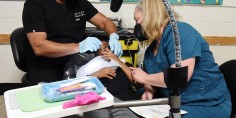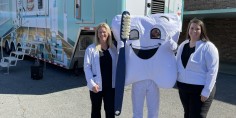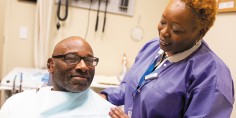Expanding the Reach
At the South Carolina Area Health Education Consortium, known as AHEC, Christie has spent the last 13 years working with students interested in health careers. She directs AHEC’s Health Careers Program — and as a native of South Carolina, she’s passionate about her work and its importance for the state.
AHEC was established in 1972 to improve the health of South Carolinians. It’s the only organization in the state that addresses health care work force needs starting at the level of elementary school education and extending to practicing health care professionals. Its four regional centers cover the state.
Working as a cooperative effort of the Medical University of South Carolina, the University of South Carolina, and South Carolina community teaching hospitals, AHEC offers programs designed to increase the number of young people in health care professions. Part of that work focuses on underrepresented ethnic minority groups and the economically disadvantaged.
With funding from The Duke Endowment that began in 2012, Bench to Bedside expands AHEC’s outreach to include college undergraduates. According to research, the period of study following high school, but before admission to a health professions training program, is particularly critical to the health careers pipeline.
The new grant attempts to build on lessons learned from earlier efforts, Sales says, by specifically targeting students further along in their journey. Project leaders plan to measure success by monitoring the number of minority participants who apply and are accepted into those training programs.
“The goal,” Christie says, “is to work with undergraduates who are interested in a health care career and keep them interested, or, if they haven’t considered it, to show them that this is a possibility.”








